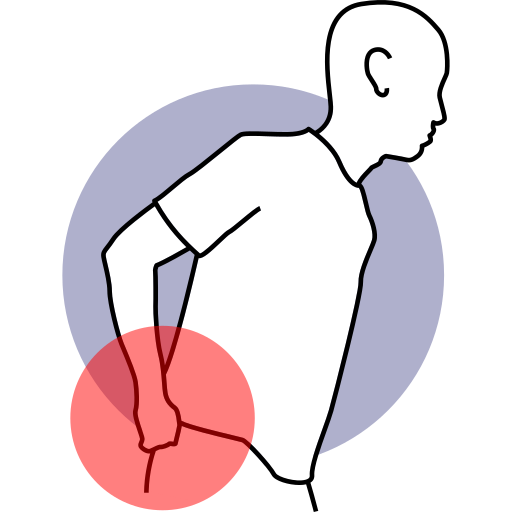Strengthen your glutes, pelvic floor, and hip flexors with jump rope training.
Hip pain is a common problem that can affect people of all ages and activity levels. Whether you’re walking, climbing stairs, or lifting weights, your glute muscles play an important role in these everyday activities. When your glutes are weak or injured, it can lead to abnormal movement patterns and hip pain. The good news is that you can improve your glute strength, pelvic floor health, and hip flexor mobility by incorporating jumping rope into your workout routine.

Jumping rope is a high-intensity cardiovascular exercise cardiovascular exercise that engages your entire body, including your glutes, hips, and pelvic floor muscles. By jumping rope regularly, you can strengthen these muscles and improve their ability to support your body during daily activities. Jumping rope can also help to increase your range of motion, flexibility, and coordination, which can reduce your risk of hip injuries and pain. One of the main benefits of jumping rope is its ability to strengthen your glutes. Your glute muscles play a critical role in hip stability and movement. When they’re weak, it can lead to abnormal movement patterns and hip pain. Jumping rope engages your glutes in a way that many other exercises don’t. By jumping rope regularly, you can improve your glute strength, which can help to alleviate hip pain and improve your overall posture. Jump rope workouts can also benefit your pelvic floor health. Your pelvic floor muscles support your lower back and help to prevent incontinence by holding your urine and feces to keep you dry and relaxed. Weakness in these muscles can lead to incontinence, painful intercourse, prolapse, constipation, and difficulty achieving an orgasm.
🥊
By jumping rope regularly, you can strengthen your pelvic floor muscles and improve their ability to support your body during daily activities. Another benefit of jumping rope is its ability to improve your hip flexor mobility. Your hip flexors are a group of small but powerful muscles that pull your legs, groin area, buttocks, and the back of your upper leg forward and down. They allow you to walk on a straight line and use the muscles of your legs and back of your shoulders. When tight, they can cause discomfort, limit your range of motion, and lead to long-term side effects. By jumping rope regularly, you can increase your hip flexor mobility and reduce your risk of hip injuries and pain. Incorporating jumping rope into your workout routine is easy and can be done anywhere. All you need is a jump rope and enough space to move around. Start by jumping rope for 30 seconds at a time and gradually increase the duration as you get stronger. You can also vary the intensity of your workout by adjusting the speed and height of your jumps. To target your glutes, try adding some squats or lunges into your jump rope routine.
❤️
To round things up, j**jumping rope is a fun and effective way to strengthen your glutes**, pelvic floor, and hip flexors to alleviate hip pain and improve your posture. By adding a training jump rope into your workout routine, you can increase your range of motion, flexibility, and coordination, which can reduce your risk of hip injuries and pain. So grab a jump rope and get jumping for stronger hips and a healthier body
🎖️